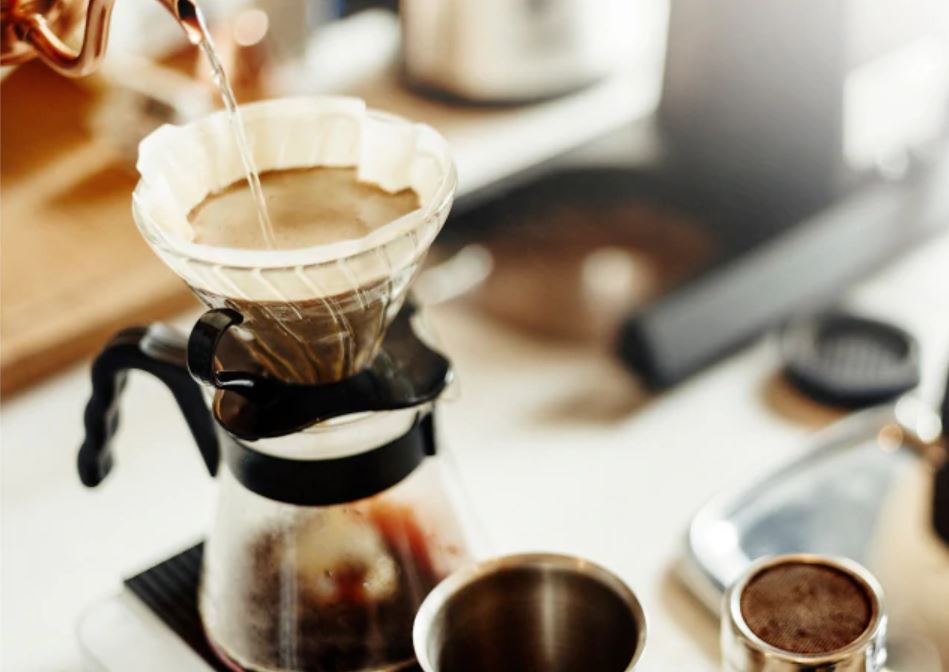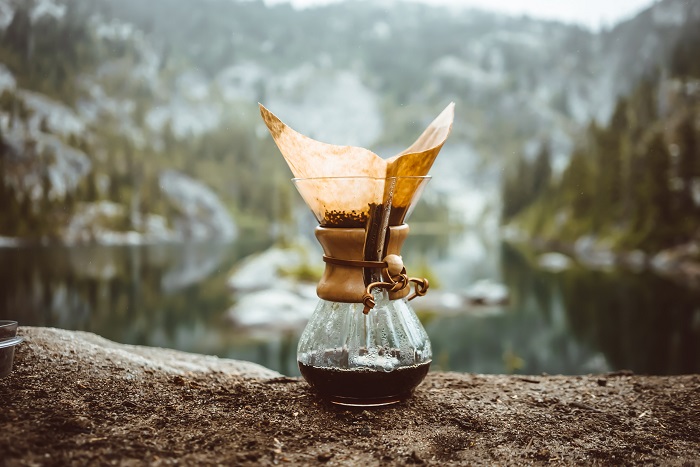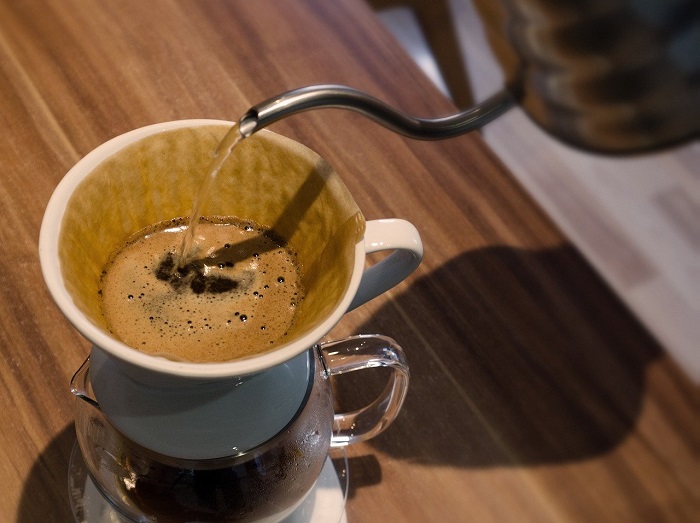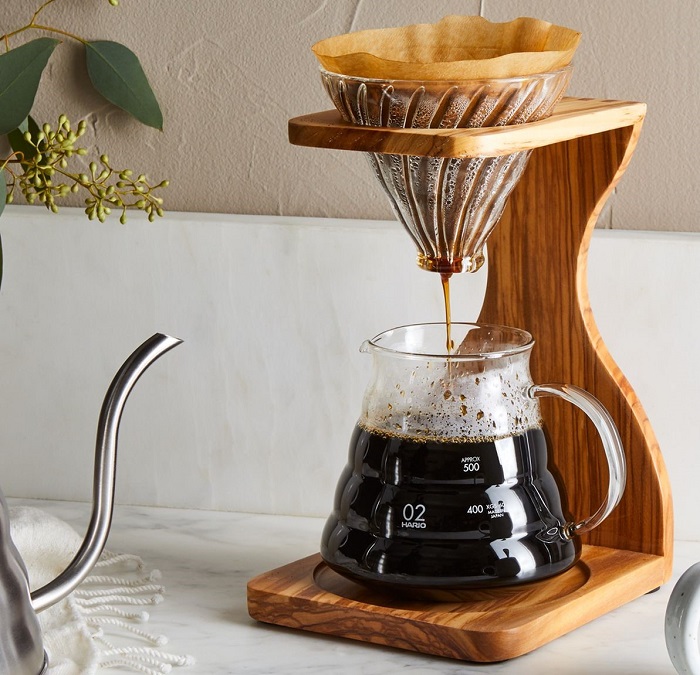HOW TO MAKE COFFEE WITHOUT A FILTER? GOOD TIPS AND GUIDES IN 2024.
Coffee is a beloved beverage that many people rely on to start their day or give them a much-needed boost in the afternoon. But what do you do when you don’t have a coffee filter on hand? While coffee filters are a convenient way to make coffee, there are several other methods you can use to make a delicious cup of coffee without a filter.
In this article, we’ll explore some of these methods and provide you with step-by-step instructions so you can enjoy a delicious cup of coffee anytime, anywhere.

HOW TO MAKE COFFEE WITHOUT A FILTER?
1. WHAT IS COFFEE FILTER?
A coffee filter is a paper or cloth material that is used to strain coffee grounds from brewed coffee. Coffee filters are typically placed in a coffee maker or dripper to hold the grounds and allow the brewed coffee to pass through, while keeping the grounds separate.
They come in different sizes and shapes, and are often disposable, although reusable cloth filters are also available. Coffee filters help to remove any impurities from the coffee and produce a smoother, cleaner cup of coffee.
You can see How to Make Coffee Without a Filter as below.
2. HOW MANY TYPES OF COFFEE FILTER?
There are several types of coffee filters available, including:
- Paper filters – these are the most common type of filter and are typically disposable. They come in different shapes and sizes to fit various coffee makers and drippers.
- Cloth filters – these are reusable filters made from cloth or muslin. They can be washed and reused, making them an eco-friendly option.
- Metal filters – these are typically made from stainless steel or mesh and are also reusable. They allow more oils and flavors to pass through, resulting in a stronger, more robust cup of coffee.
- French press filters – these are typically made from stainless steel mesh and are used in French presses to separate the grounds from the brewed coffee.
- Espresso machine filters – these are specialized filters used in espresso machines to create a concentrated shot of espresso. They come in different sizes and shapes to fit various machines.
You can refer How to Make Coffee Without a Filter as below.
3. WHAT ARE BENEFITS OF COFFEE FILTER?
Using a coffee filter can provide several benefits, including:
- Removing unwanted particles: A coffee filter can remove unwanted particles, such as coffee grounds or sediment, from your brewed coffee, resulting in a smoother and cleaner taste.
- Easy to use: Coffee filters are easy to use and require minimal cleanup, making them a convenient option for brewing coffee.
- Consistent brewing: Using a coffee filter can help ensure that the coffee grounds are evenly distributed, leading to a more consistent brewing process and a better-tasting cup of coffee.
- Versatility: Coffee filters can be used in a variety of brewing methods, such as drip brewing, pour-over, and French press, making them a versatile option for coffee lovers.
We introduce How to Make Coffee Without a Filter as below:
4. HOW TO MAKE COFFEE WITHOUT A FILTER?
There are several ways to make coffee without a filter, some of which are:
- Cowboy coffee: Bring water to a boil in a pot, add coffee grounds, and let it steep for a few minutes. Pour the coffee into a cup, leaving the grounds behind.
- French press: Add coffee grounds to a French press, pour hot water over them, and let it steep for a few minutes. Press the plunger down to separate the grounds from the coffee.
- Aeropress: Place a paper filter in the Aeropress, add coffee grounds, pour hot water over them, and let it steep for a few minutes. Plunge the Aeropress to separate the grounds from the coffee.
- Cloth filter: Pour hot water over coffee grounds in a cloth filter, let it steep for a few minutes, and then pour the coffee into a cup.
- Eggshell filter: Add crushed eggshells to coffee grounds, pour hot water over them, and let it steep for a few minutes. The eggshells will act as a filter, separating the grounds from the coffee.
It’s important to note that some of these methods may not produce the same quality of coffee as using a filter, but they can be a useful option if a filter is not available.
Please see How to Make Coffee Without a Filter as above.
5. HOW TO BUY A COFFEE FILTER?
If you prefer to use a coffee filter for your daily coffee routine, there are a few things to consider when purchasing one. Here are some tips:
- Size: Make sure you choose the right size for your coffee maker. Most coffee filters are designed to fit standard coffee makers, but there are also larger or smaller filters available for different brewing methods.
- Material: Coffee filters are typically made from paper or cloth. Paper filters are disposable and convenient, while cloth filters are reusable and eco-friendly. Each material can affect the taste and quality of your coffee, so choose the one that suits your preferences.
- Shape: Coffee filters come in different shapes, including round, square, and cone-shaped. The shape can impact how the water flows through the coffee and the overall taste.
- Brand: Choose a reputable brand for quality and consistency. Some popular brands include Melitta, Chemex, and Hario.
- Price: Coffee filters can range in price from a few cents to a few dollars each, depending on the brand and type. Consider your budget and how often you plan to use the filters before making a purchase.
Above are steps on How to Make Coffee Without a Filter. Now, let’s see some tips and guides on making coffee without a filter as below.
TIPS AND GUIDES ON MAKING COFFEE WITHOUT A FILTER.

1. SOME TIPS ON MAKING COFFEE WITHOUT A FILTER.
Here are some tips on making coffee without a filter:
- Use a French press: A French press is a great way to make coffee without a filter. Simply add ground coffee and hot water to the press, let it steep for a few minutes, then press the plunger down to separate the coffee from the grounds.
- Use a percolator: A percolator is an old-fashioned way to make coffee that involves boiling water and letting it drip through coffee grounds. This method can produce a strong and flavorful cup of coffee.
- Use a sock: In some cultures, a cloth sock is used as a makeshift filter for coffee. Simply fill the sock with coffee grounds and pour hot water over it, allowing the coffee to drip through into a cup.
- Use a cheesecloth: A cheesecloth can be used as a makeshift filter for coffee. Simply place the cheesecloth over a mug or carafe and pour the coffee through it, allowing the liquid to filter through the cloth.
- Use a fine mesh strainer: A fine mesh strainer can be used to strain coffee grounds from the liquid. This method may not be as effective as using a filter, but it can work in a pinch.
Remember, each of these methods will produce a slightly different flavor profile, so experiment to find the method that produces the coffee taste you prefer.
Please refer How to Make Coffee Without a Filter as above.
2. HOW TO CHANGE KEURIG FILTER?
Here’s a step-by-step guide on how to change the filter in your Keurig coffee maker:
- Turn off and unplug your Keurig coffee maker.
- Open the top of the coffee maker and remove the K-cup holder.
- Locate the filter holder inside the water reservoir and remove it.
- Discard the old filter and rinse the holder with cold water.
- Soak the new filter in cold water for 5 minutes to activate the charcoal.
- Insert the new filter into the holder and snap the holder back into place in the water reservoir.
- Replace the K-cup holder and close the top of the coffee maker.
- Plug in your Keurig coffee maker and turn it on.
- Run a few brewing cycles of plain water through the machine to flush out any loose charcoal particles.
- Your Keurig filter is now ready to use.
Note: It’s recommended to change the filter every 2-3 months or after brewing 60 tank refills, whichever comes first.
There are How to Make Coffee Without a Filter as above.
3. WHAT CAN I USE AS A COFFEE FILTER?
There are several things you can use as a coffee filter in a pinch if you don’t have any traditional filters on hand. Here are some options:
- Paper towels: Paper towels can be used as makeshift coffee filters. Simply place a paper towel over your coffee cup or carafe, and pour the coffee through it.
- Cheesecloth: Cheesecloth is a versatile and reusable fabric that can be used to strain coffee. Fold the cheesecloth several times to create multiple layers, and place it over a cup or carafe before pouring in the coffee.
- Fine mesh sieve: A fine mesh sieve can be used to strain coffee and remove any grounds or sediment. Simply pour the coffee through the sieve into a cup or carafe.
- Nylon stocking: An unused nylon stocking can also be used as a coffee filter. Place the stocking over a cup or carafe, and pour the coffee through it.
- French press: A French press is a coffee brewing device that uses a plunger and a metal mesh filter to separate the coffee grounds from the liquid. It’s a great option if you don’t have traditional filters on hand.
You can see How to Make Coffee Without a Filter as above.
4. HOW LONG CAN WE USE A FILTER?
The lifespan of a coffee filter depends on the type of filter you are using.
Paper filters are designed to be disposable, and you should use a new one each time you make coffee.
Reusable filters, on the other hand, can last for months or even years if they are properly cleaned and maintained. The manufacturer’s instructions will give you an idea of how often you should replace the filter.
It’s important to note that if a filter becomes clogged or develops a tear or hole, it should be replaced immediately.
We introduce How to Make Coffee Without a Filter as above.
5. SOME COFFEE RECIPES AND HOW TO MAKE THEM.
Here are some coffee recipes you can try:
5.1. Dalgona Coffee:
Ingredients:
- 2 tbsp instant coffee.
- 2 tbsp sugar.
- 2 tbsp hot water.
- Milk.
Instructions:
- In a bowl, mix the instant coffee, sugar, and hot water until the mixture becomes creamy.
- Fill a glass with milk and ice.
- Spoon the creamy coffee mixture on top of the milk and enjoy!
5.2. Mocha Latte:
Ingredients:
- 1 cup brewed coffee.
- 1 tbsp cocoa powder.
- 1 tbsp sugar.
- ½ cup milk.
Instructions:
- In a saucepan, whisk together the brewed coffee, cocoa powder, and sugar.
- Heat the mixture over medium heat until the sugar dissolves.
- Add milk to the saucepan and heat the mixture until it’s hot.
- Use a frother or whisk to create foam.
- Pour the coffee mixture into a mug and add the foam on top.
5..3. Vanilla Iced Coffee:
Ingredients:
- 1 cup brewed coffee.
- 1 tbsp vanilla syrup.
- ½ cup milk.
- Ice cubes.
Instructions:
- Fill a glass with ice cubes.
- Pour the brewed coffee over the ice.
- Add vanilla syrup and milk.
- Stir and enjoy!
5.4. Cinnamon Spice Latte:
Ingredients:
- 1 cup brewed coffee.
- 1 tbsp cinnamon.
- 1 tbsp brown sugar.
- ½ cup milk.
Instructions:
- In a saucepan, whisk together the brewed coffee, cinnamon, and brown sugar.
- Heat the mixture over medium heat until the sugar dissolves.
- Add milk to the saucepan and heat the mixture until it’s hot.
- Use a frother or whisk to create foam.
- Pour the coffee mixture into a mug and add the foam on top.
Enjoy your homemade coffee!
You can refer How to Make Coffee Without a Filter as above.
6. COMMON MISTAKES ON HOW TO MAKE COFFEE WITHOUT A FILTER.
Here are some common mistakes to avoid when making coffee without a filter:
- Using too much coffee: Using too much coffee can result in a bitter and overpowering taste. It’s important to measure the coffee accurately to get the desired strength.
- Using the wrong grind: Different brewing methods require different grind sizes. Using the wrong grind can cause over or under-extraction, resulting in a bad taste.
- Not heating the water properly: Water temperature plays a crucial role in brewing coffee. If the water is too hot, it can burn the coffee and make it bitter. If it’s too cold, it won’t extract the flavors properly.
- Not brewing for the right amount of time: Brewing for too long or too short can affect the taste of the coffee. It’s important to follow the recommended brewing time for the chosen method.
- Not using fresh coffee: Stale coffee can result in a stale taste. Always use freshly roasted and ground coffee for the best flavor.
- Not cleaning the brewing equipment: Neglecting to clean the brewing equipment can lead to a buildup of coffee oils and residue, affecting the taste of the coffee.
By avoiding these common mistakes, you can ensure that your coffee without a filter turns out delicious every time.
Please see How to Make Coffee Without a Filter as above.
FAQS ABOUT HOW TO MAKE COFFEE WITHOUT A FILTER.

1. Question 1: Can I use a cheesecloth as a filter for coffee?
Answer: Yes, cheesecloth can be used as a makeshift filter for coffee. Simply place the coffee grounds inside the cheesecloth and tie it up like a bag.
2. Question 2: Can I use a paper towel as a coffee filter?
Answer: While it is possible to use a paper towel as a filter, it is not recommended as it can easily break apart and leave small bits of paper in the coffee.
3. Question 3: Can I use a tea bag to make coffee?
Answer: Technically, it is possible to use a tea bag to make coffee, but the result will not be the same as using coffee grounds. The tea bag may not be able to extract the same flavor and strength as coffee.
There are How to Make Coffee Without a Filter as above.
4. Question 4: Can I use a sock as a coffee filter?
Answer: Yes, a clean sock can be used as a makeshift filter for coffee. Simply put the coffee grounds in the sock and strain hot water through it.
5. Question 5: Can I use a metal mesh strainer as a coffee filter?
Answer: Yes, a metal mesh strainer can be used as a filter for coffee, but it may not catch all of the finer coffee grounds.
6. Question 6: Can I reuse a coffee filter?
Answer: It is not recommended to reuse coffee filters as they may already have absorbed some of the coffee oils and flavors, which can affect the taste of the next cup of coffee.
7. Question 7: Can I use a French press as a filter for coffee?
Answer: Yes, a French press can be used to make coffee without a filter. The metal mesh filter in the press helps to strain out the coffee grounds.
Please see How to Make Coffee Without a Filter as above.
8. Question 8: Can I use a tea strainer to make coffee?
Answer: A tea strainer can be used to make coffee, but it may not be able to catch all of the coffee grounds and may not produce the same strength of coffee as using a proper filter.
9. Question 9: Can I use a fine mesh sieve as a coffee filter?
Answer: A fine mesh sieve can be used as a filter for coffee, but it may not be able to catch all of the finer coffee grounds and may produce a weaker cup of coffee.
10. Question 10: Can I make coffee without any filter?
Yes, coffee can be made without any filter by simply brewing the coffee grounds in water and then straining out the grounds using a sieve or cheesecloth.
CONCLUSION.
In conclusion, making coffee without a filter may seem daunting at first, but with the right tools and techniques, it can be a great alternative to traditional brewing methods. Whether you use a French press, a cloth filter, or even a clean sock, there are plenty of options to choose from.
Experimenting with different methods can also lead to unique and delicious coffee creations. Remember to use freshly roasted beans, grind them correctly, and be patient with the brewing process. With these tips and tricks, you can enjoy a delicious cup of coffee without a filter in no time.
Read more:
